Exploring the world of espresso can sometimes feel like stepping into a skilled barista’s shoes. You’ve probably heard about pressurized and non-pressurized espresso but may not know the differences between them. At its core, espresso is a method of coffee brewing that uses high pressure to force hot water through finely-ground coffee beans, extracting a concentrated and flavorful shot of coffee.
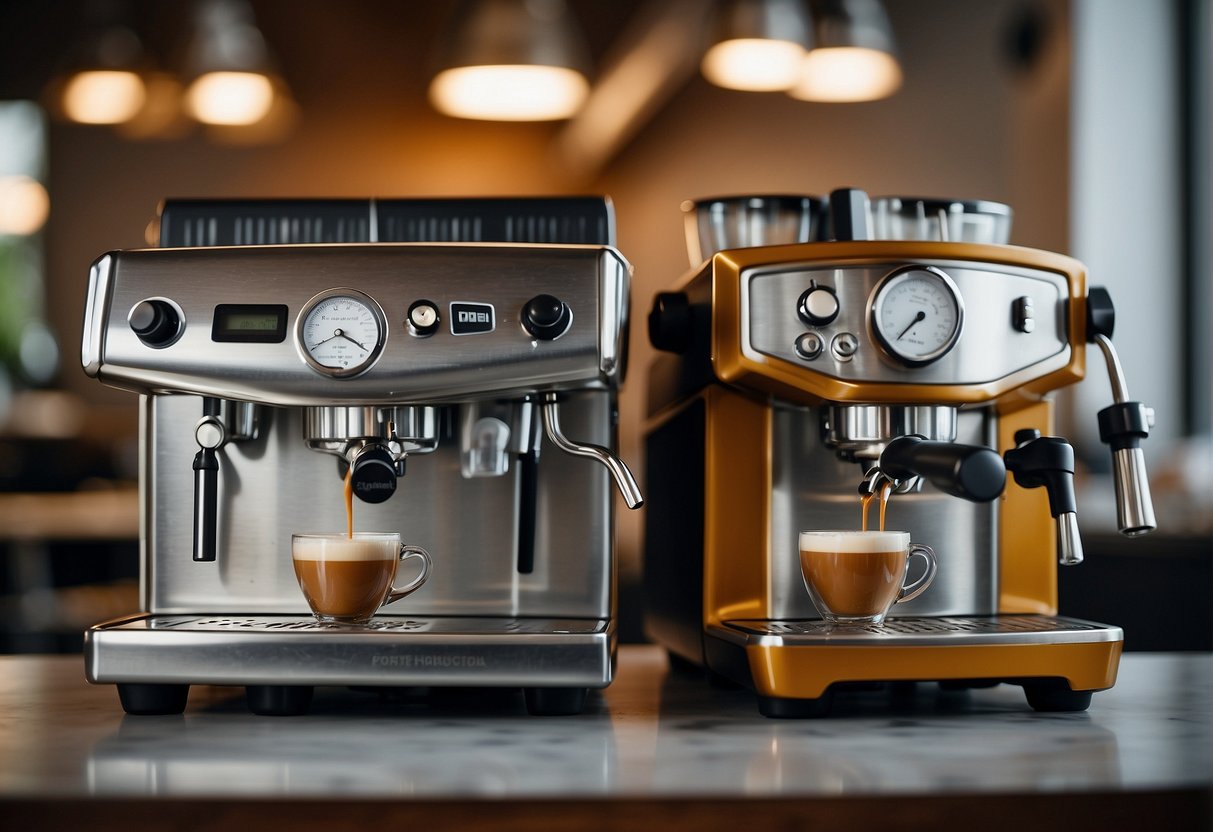
Pressurized espresso machines utilize a specialized portafilter basket to create the necessary pressure for extraction. This approach is often more forgiving and can be an excellent starting point for beginners or for those who use pre-ground coffee. It helps produce a crema on top of the espresso, which is that lovely, frothy layer you often see on coffee shots in cafes.
In contrast, non-pressurized brewing relies on a precise grind size and consistent tamping pressure to achieve the right resistance for water to pass through the coffee grounds. This method gives you more control over the extraction process and can lead to a richer, more nuanced flavor profile in your espresso. It’s favored by experienced coffee enthusiasts and professionals who want to fine-tune their espresso to perfection.
Understanding Espresso Machines
Espresso machines are specialized equipment designed to extract rich and flavorful coffee under high pressure. This section will guide you through the types of machines, their operation, and the differences between pressurized and non-pressurized baskets.
Types of Espresso Machines
There are primarily two types of espresso machines that you’ll encounter: manual and automatic. Manual machines require you to grind the coffee, tamp it, and pull the shot yourself. They offer a hands-on experience and are beloved by purists. On the other hand, automatic machines do most of the work for you, grinding the coffee, tamping, and even controlling the water flow for consistent results.
- Manual Espresso Machines
- Hands-on brewing experience
- Greater control over the extraction process
- Automatic Espresso Machines
- User-friendly; ideal for convenience
- Consistent shots with less effort
How Espresso Machines Work
Your espresso machine operates by forcing hot water through finely-ground coffee at high pressure. Here’s a quick look at the typical process:
- Water Heating: Water is heated to the precise temperature.
- Coffee Grinding: Coffee beans are ground to a fine consistency.
- Tamping: Ground coffee is tamped firmly to ensure an even extraction.
- Brewing: Hot water is forced through the coffee grounds to extract the espresso.
The pressure is the key, usually around 9 bar, achieved through either a manual lever or a pump in automatic machines.
Pressurized vs Non-Pressurized Baskets
Differences in baskets can greatly affect your espresso’s quality.
- Pressurized Baskets: Designed for novice baristas, they have a single small hole for the espresso to pass through, creating artificial pressure for a more forgiving extraction. Ideal if you’re using a less than perfect grinder or pre-ground coffee.
- Pros:
- Forgiving for grind size and tamping technique
- Creates crema with less perfect espresso grinds
- Cons:
- Less control over flavor extraction
- Pros:
- Non-Pressurized Baskets: These require more expertise as they allow the water to flow freely through the coffee grounds. This type of basket is favored by coffee enthusiasts and professionals as it provides the potential for a superior espresso shot, assuming you have a good grinder and tamping technique.
- Pros:
- Better flavor extraction
- More control for experienced users
- Cons:
- Requires a precise grind and tamping pressure
- Less forgiving than pressurized baskets
- Pros:
The choice between pressurized and non-pressurized baskets will significantly influence the flavor and quality of your espresso shots, so consider your skill level and the effort you’re willing to put into learning the craft of espresso making.
The Role of Coffee Grounds
In espresso preparation, both grind size and tamping are crucial for optimal flavor extraction. Choosing between pre-ground and freshly ground coffee can also significantly affect your espresso quality.
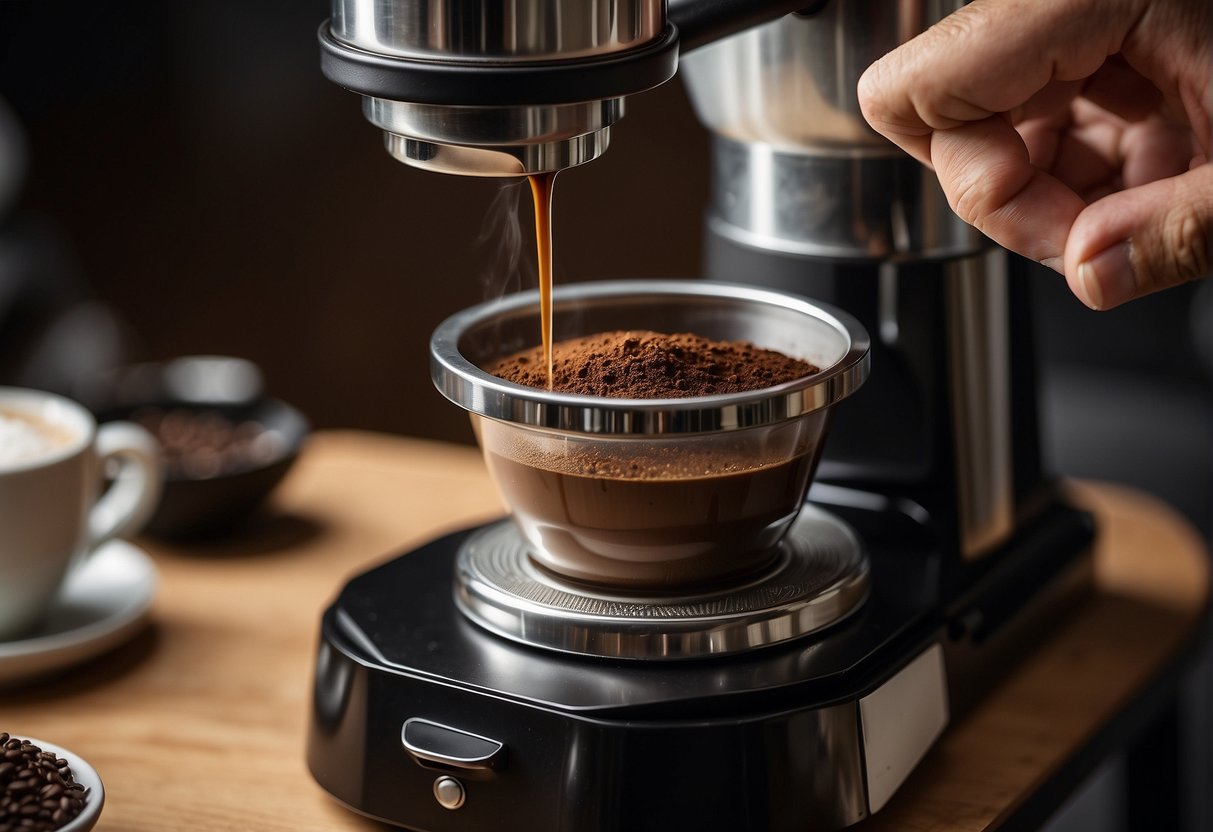
Grind Size and Tamping
Your espresso’s body and flavor depend heavily on the grind size of your coffee grounds. For pressurized espresso systems, a coarser grind may be sufficient, as the machine will compensate for sub-optimal extraction. However, in non-pressurized systems, a fine, consistent grind is key to creating the necessary resistance for water to extract flavors properly.
When it comes to tamping, apply firm, even pressure to compact your grounds into the espresso basket. Proper tamping eliminates air pockets and ensures water passes through the grounds at a consistent rate. Remember:
- Too light a tamp: Results in under-extraction, weak flavor.
- Too firm a tamp: Causes over-extraction, bitter taste.
Pre-Ground vs Freshly Ground Coffee
Pre-ground coffee is convenient but often lacks the freshness and aroma of freshly ground beans. Once ground, coffee begins to lose its volatile compounds, which can diminish the espresso’s richness and complexity.
Freshly ground coffee, on the other hand, gives you the advantage of enjoying coffee at its peak flavor. Grinding beans right before brewing ensures you capture the oils and aromas that contribute to the espresso’s full-bodied taste. Here’s what to keep in mind:
- Pre-ground coffee: More consistent size, but may lack freshness.
- Freshly ground coffee: Requires a grinder but offers optimal freshness and flavor.
For the best espresso experience, invest in a good grinder and use freshly ground coffee beans tailored to your espresso machine’s demands.
Extraction and Crema
In the world of espresso, the nuances of extraction and the formation of crema play pivotal roles in crafting the perfect cup. Let’s explore how pressure variations impact these aspects.
Artificial Pressure and Its Effects
When you use a pressurized portafilter basket, the machine creates artificial pressure. This helps extract espresso even from coarser grounds or when tamp pressure is not ideal. Although it simplifies the brewing process and requires less precision from you, there’s a trade-off. The crema produced is often thicker and more foamy, which can mask the true flavors of the coffee.
- Extraction control: Limited with pressurized baskets as the overpressure valve adds the pressure needed.
- Tamp pressure: Less critical, which may benefit beginners or those using pre-ground coffee.
Achieving the Perfect Crema
For espresso aficionados aiming for the perfect layer of crema, a non-pressurized basket is your tool of choice. Here, the crema’s integrity relies heavily on your skill—specifically, how well you grind, dose, and tamp your coffee.
- Tamp pressure: Essential to achieve consistent extraction.
- Extraction control: Greater, allowing you to fine-tune the taste and texture of your espresso.
- Portafilter basket: Non-pressurized baskets require a more refined grind and even tamp to extract properly.
Remember that the ideal layer of crema should be rich, robust, and hold itself for a while after pouring.
Pursuing the Perfect Espresso Shot
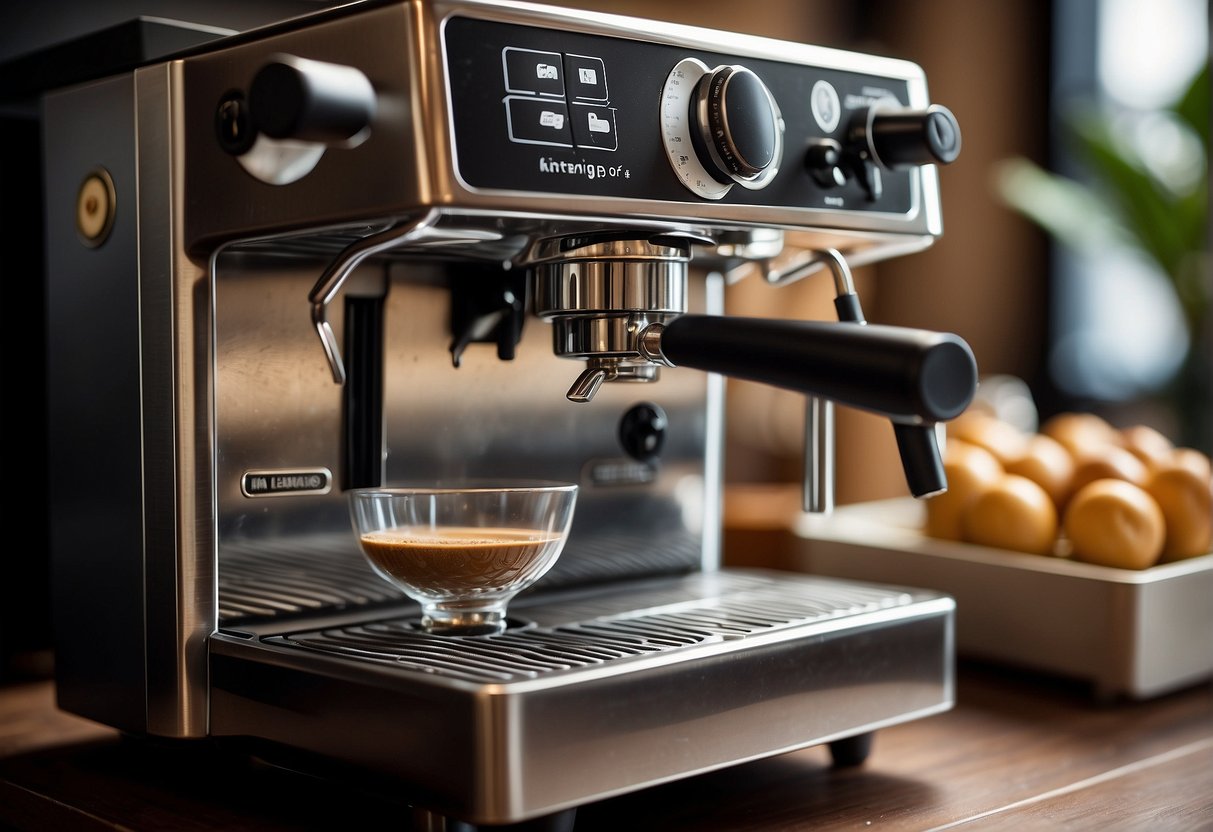
Creating an ideal espresso shot is a delightful blend of art and science. To achieve this, a balance of skill, precision, and high-quality equipment is essential.
Skill and Precision in Espresso Making
When you embark on making an espresso, your technique is as crucial as the recipe itself. Achieving a consistent extraction requires careful attention to the coffee brewing process. This includes the grind size, tamping pressure, and the time it takes for water to pass through the coffee grounds. A finer grind and firm, even tamping help prevent water from channeling unevenly through the coffee, which can lead to over-extraction or under-extraction, negatively affecting flavor.
- Grind Size: Opt for a fine grind that resembles table salt.
- Tamping: Apply even pressure across the surface of the grounds.
- Timing: Aim for a 25-30 second brew time for a balanced flavor.
Mastering these steps ensures that every espresso shot you pull has the potential to reach its flavor pinnacle.
The Impact of Equipment Quality
Your espresso’s final taste is also significantly impacted by the quality of your equipment. Investing in a high-end machine, like the Expobar Brewtus, the Francis Francis Semi-Auto machines, or Breville espresso machines, can make a substantial difference. These machines typically offer better temperature stability and artificial pressure control, two factors that are vital for extracting the best shot possible.
- Expobar Brewtus: Known for dual-boiler technology, allowing for precise temperature control.
- Francis Francis: Popular for its stylish design and user-friendly features.
- Breville: Often praised for its innovative features and ease of use.
While high-quality machines represent an investment, they are designed to deliver a more predictable and refined brew process, ultimately contributing to a superior espresso experience. Remember, achieving the perfect espresso shot is about blending your skills with the capabilities of your equipment for that delightful coffee experience.
Choosing Between Pressurized and Non-Pressurized
In choosing between pressurized and non-pressurized espresso systems, you should consider your skill level and the taste and texture you wish to achieve in your espresso.
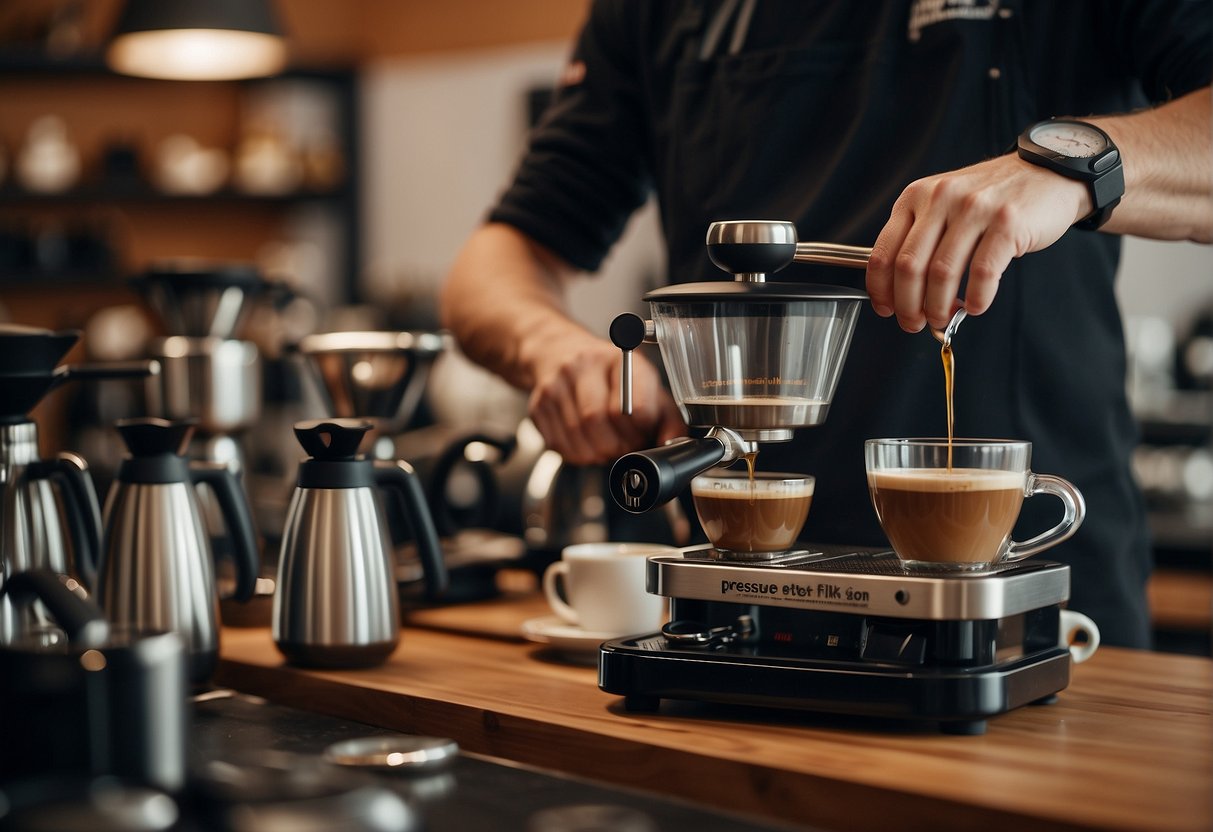
Benefits and Drawbacks
Pressurized Baskets:
- Benefits: Pressurized baskets make it easier for beginners to pull a decent shot of espresso with fewer variables to manage. They’re forgiving, and they compensate for coffee grounds that are not perfectly ground or tamped by building up the pressure needed to create crema on top of the espresso.
- Drawbacks: The downside is that they offer less control over extraction, leading to a possible loss of flavor nuances. The crema produced might be more frothy than creamy, potentially affecting texture and taste.
Non-Pressurized Baskets:
- Benefits: Non-pressurized baskets, while requiring a full portafilter, offer greater control over the extraction process. This can lead to a richer, more flavorful espresso, where the true character of the coffee can shine through. You’re rewarded with the ability to extract espresso with precision, accentuating the subtle flavor nuances.
- Drawbacks: The challenge lies in the steep learning curve for perfecting your technique. Without the right grind size, tamping pressure, and consistency, you may face under-extracted or over-extracted shots.
Recommended for Beginners vs Experienced Baristas
- Beginners: If you’re new to making espresso, a machine with a pressurized basket is recommended. This system requires less skill initially and eases your learning curve.
- Experienced Baristas: For those with experience and those seeking to grow their barista skills, non-pressurized baskets are the better choice. They necessitate a greater understanding of espresso extraction but provide the ability to explore and express the full potential of your coffee beans.
Frequently Asked Questions
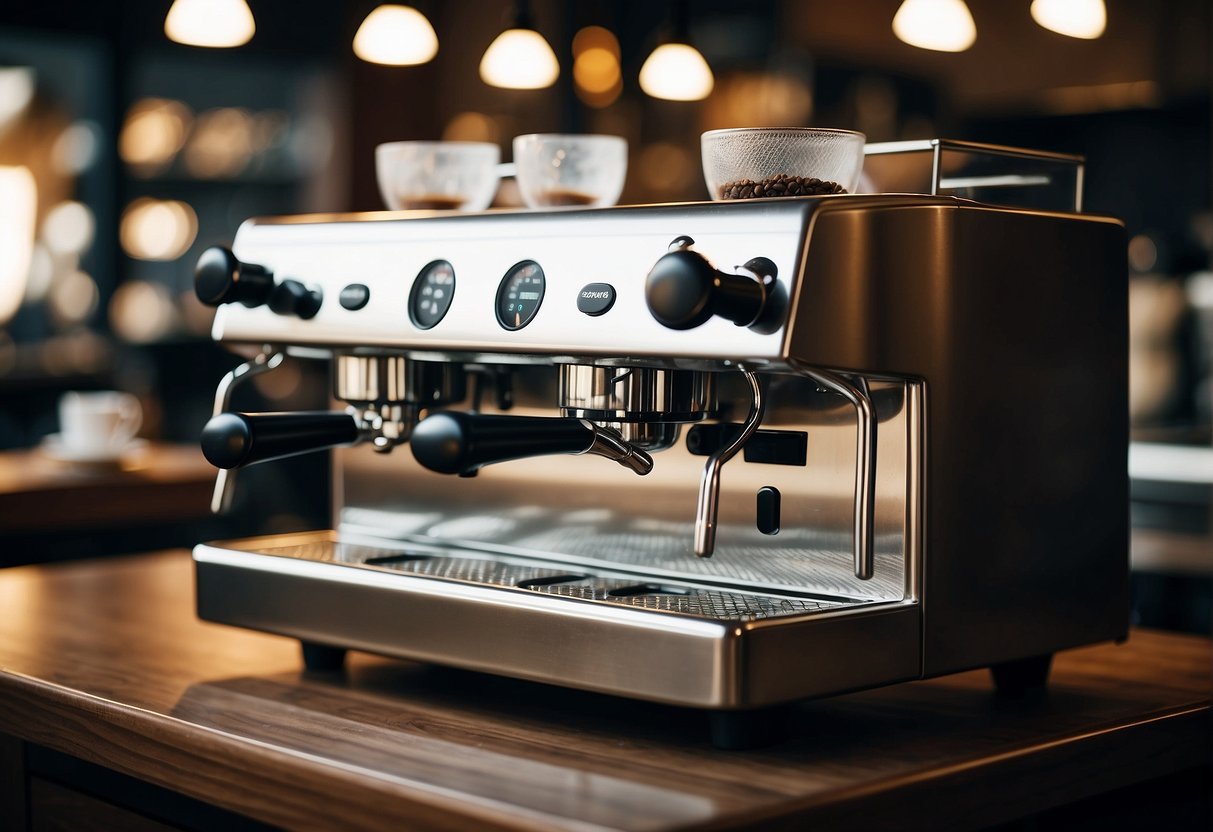
In this section, you’ll find clear answers to common queries about the distinctions between pressurized and non-pressurized espresso portafilters and how they influence the espresso-making process.
What are the main differences between pressurized and non-pressurized portafilters?
A pressurized portafilter has a double wall that creates backpressure, which helps to extract espresso even if your grind or tamping technique isn’t perfect. Non-pressurized portafilters rely solely on the coffee’s grind size and tamping consistency for the right resistance and an aromatic shot.
Can you achieve true espresso with a pressurized basket?
Yes, you can achieve true espresso with a pressurized basket. However, the crema may be artificially enhanced and the espresso’s body may be less rich when compared to shots pulled from non-pressurized portafilters.
How does a non-pressurized portafilter affect the espresso shot quality?
The quality of espresso from a non-pressurized portafilter is highly dependent on your grind size, tamping pressure, and technique. Mastering these variables can result in a more flavorful and nuanced shot.
What advantages do bottomless portafilters offer compared to pressurized ones?
Bottomless portafilters, which are a type of non-pressurized portafilter, offer clearer feedback on your extraction technique, as you can observe the flow of the espresso directly. They can lead to better crema and a fuller flavor profile if used correctly.
Is there a specific type of coffee machine that works best with non-pressurized baskets?
Non-pressurized baskets typically work best with higher-end espresso machines that offer more consistent water temperature and pressure. These machines allow you to fine-tune extraction variables to optimize the flavor.
What impact does using a pressurized portafilter have on the overall coffee flavor?
A pressurized portafilter can mask inconsistencies in grind size and tamping, producing a more forgiving shot with less complexity. The resulting flavor is typically less robust and nuanced than what you might achieve with a non-pressurized system.
